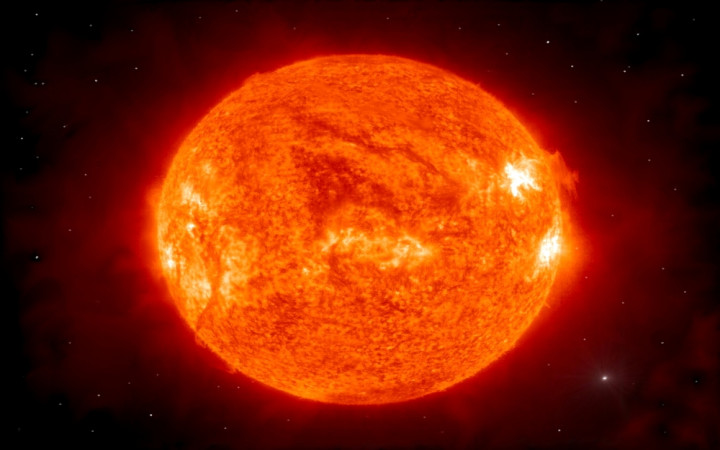The sun that heats our planet and brings life to everything on Earth is a big ball of gas. Those gases are mostly hydrogen and helium, but the sun also contains small amounts of several other elements, including oxygen, carbon, nitrogen, magnesium and iron.
At its core, the sun burns millions of tons of hydrogen every second in a process called "nuclear fusion." Fusion turns hydrogen into helium and releases incredible amounts of energy in the process. It's fusion that creates the heat and the rays of light that eventually reach Earth.
How hot does it get where you live during the summer? Temperatures over 100° F are common in many parts of the United States during the summer.
Just think about how hot it would be, though, if Earth were closer to the sun. At 93 million miles away, the Earth is just far enough away from the sun to allow us to live comfortably all year long.
What's the hottest thing on Earth? Many people immediately think of lava, the hot, molten rock that occasionally flows from volcanoes.
Lava is indeed very hot, reaching temperatures of 2,200° F or more. But even lava can't hold a candle to the sun!
At its surface (called the "photosphere"), the sun's temperature is a whopping 10,000° F! That's about five times hotter than the hottest lava on Earth. But the photosphere isn't even the hottest part of the sun.
The sun's temperature gets even hotter as you move away from the photosphere — either inward toward the core or outward toward the sun's outermost atmospheric layer.
This outermost atmospheric layer is called the "corona." The corona is the bright halo of light you can see during a total solar eclipse.
The farthest point of the corona from the sun can be as hot as 3,600,000° F. That's right — 3.6 million degrees Fahrenheit. Incredibly, though, the corona isn't the hottest part of the sun either.
To get to the hottest part of the sun, you have to travel all the way to its core. In the core, the process of nuclear fusion creates temperatures of approximately 27,000,000° F. A temperature of 27 million degrees Fahrenheit is more than 12,000 times hotter than the hottest lava on Earth!
If the core is the hottest part of the sun, what's the coolest part? Occasionally, cool, dark areas of magnetic disturbances erupt on the photosphere.
Scientists call these areas "sunspots." Sunspots tend to be cooler than surrounding areas and are usually “only" about 6,700° F.




